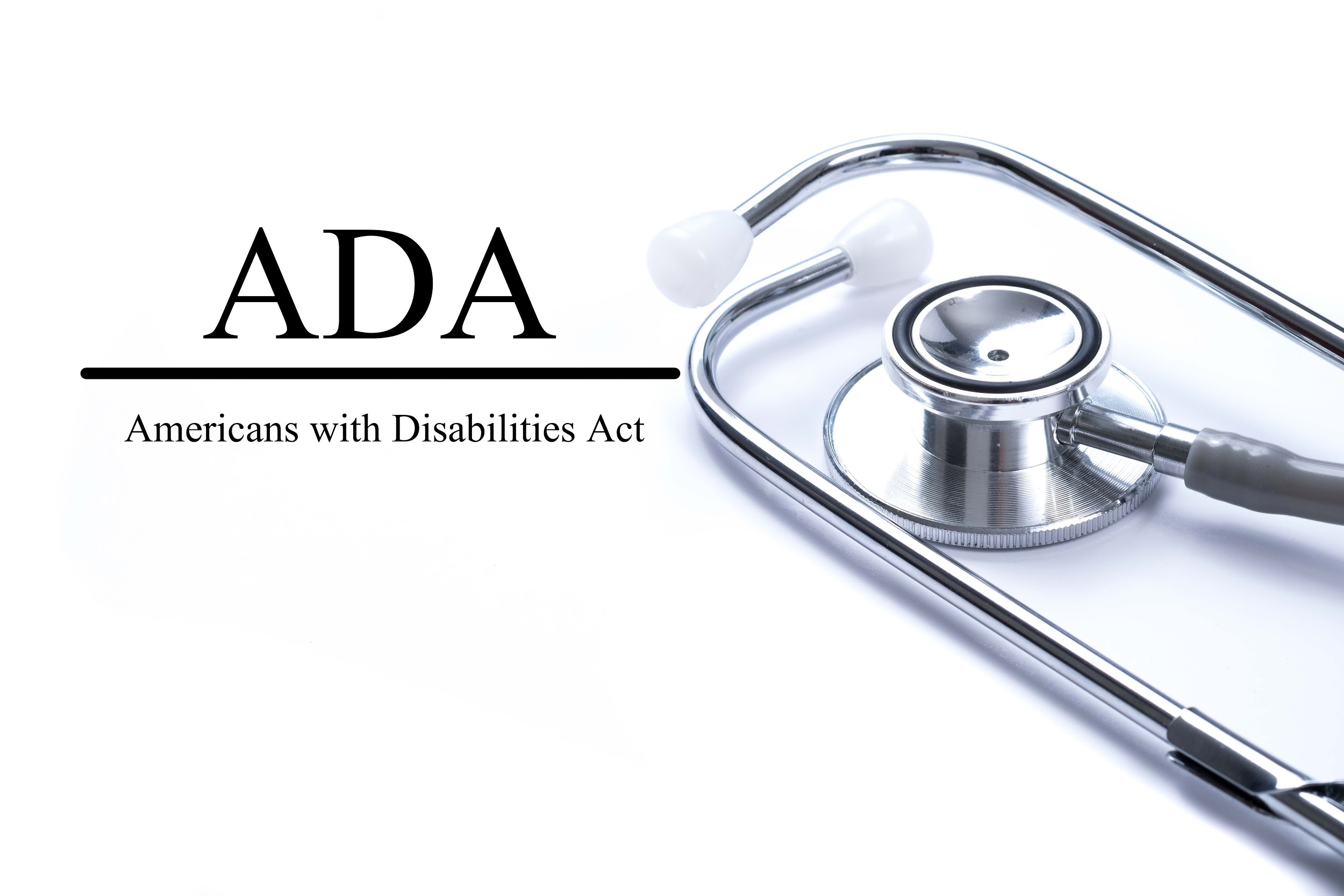Blog > The Americans with Disabilities Act (ADA) in Healthcare

The CDC estimates that 26% of Americans are living with some form of disability. This large number is also more likely to require expensive and ongoing medical care.
However, people with disabilities are also less likely to receive the same standard of care and attention. They often report lower satisfaction levels with their healthcare providers.
To that end, the Americans with Disabilities Act (ADA) was introduced in 1990. It is a federal law designed to protect people with disabilities from discrimination.
What Is the ADA?
The Americans with Disabilities Act (ADA) is a federal law that protects individuals with disabilities from discriminiation across a wide range of public and private spaces and organizations.
The law is split into five sections (or titles) that relate to how people with disabilities are accommodated in public spaces:
- Title I covers employment of people with disabilities. It ensures that the same opportunities for employment are provided to people with disabilities.
- Title II relates to all public services at both the state and federal level. It ensures that no discrimination occurs on the part of government agencies in relation to providing services for people with disabilities.
- Title III covers private enterprises and how they must accommodate disabilities. That includes private entities which operate services and/or accommodations open to the public (e.g., restaurants, hotels, gyms, movie theaters, etc.).
- Title IV relates to telecommunication service providers. It deals with how they can keep communications by phone accessible to people with hearing or speech disabilities.
- Title V covers miscellaneous items. They relate to the accommodation of people with disabilities, its impact on insurance, and how it relates to other federal and state laws.
How the ADA Affects the Healthcare Industry
The ADA and healthcare relationship is particularly pertinent. Healthcare facilities interact with and provide health care services for people with disabilities on a very regular basis. Particularly in nursing homes and similar healthcare facilities, it’s imperative to ensure you are up to ADA standards. That includes both architecturally in your facility buildings and in the provision of digital services.
A patient may feel that they were discriminated against on the basis of disability at your medical facility. In that case, they could have legitimate grounds to pursue legal action. In those cases, the grounds for discrimination fall under the scope of the ADA.
Legal Requirements
Healthcare providers and facilities mainly fall under Title III of ADA regulations. That includes entities such as:
- Nursing homes
- Private hospitals
- Health clinics
- Private physicians
ADA and healthcare refers to physical and mental health facilities of all sizes.
If your healthcare facility is run by the government (at state or local level), you fall under Title II of the ADA.
Architectural Accommodations
You are obliged to eliminate any architectural barriers as well as communication barriers from your facility when that elimination is readily achievable.
An example would be providing wheelchair access to your facility or a sign language interpreter for those with hearing disabilities. It also applies to equipment within your nursing home or healthcare practice.
Other options, such as providing the same services at an accessible secondary location, can be a more achievable way to meet the requirements.
Policies & Procedures
Incorporating accessibility into policies and procedures within your healthcare facility is also important. This can be a cost-effective way to ensure you are accommodating many different disabilities.
An example would be having processes in place to explain procedures to those who are blind or deaf. Another example would be helping patients with mobility-related disabilities navigate your practice and its facilities.
Digital Accessibility for Healthcare Providers
Many providers have endeavoured to make their facility and services as accessible as possible. However, people with disabilities still encounter many common obstacles to quality healthcare.
That’s why it’s so important to make sure your patient has a positive experience from their very first touch point. For many people, that begins with their experience using your website. There are specific accessibility requirements for web design that can ensure your site is accessible to people with a range of disabilities.
For example, many people use tools such as:
- Text-to-speech
- Closed captions on videos
- Voice browsers to access the internet and browse websites
If your website is not specifically designed to accommodate these tools, it will be a frustrating experience for potential patients.
The ADA does not mandate website accessibility, but it is still regarded as best practice in order to accommodate those with disabilities wherever possible.
Accessible Facilities According to ADA Standards

Maintaining an accessible healthcare facility according to ADA standards requires three broad categories of evaluation. You must:
- Provide equal availability and quality of services to those with disabilities
- Modify policies and procedures to provide equal access and experience
- Provide supplementary services and aids when needed for effective communication
These steps are a good start to ensuring your facility is compliant with ADA regulations:
Take an Inventory
Perform an audit of your physical space, including parking, entrances, and movement between floors and different areas (e.g., narrow corridors or heavy doors), and examination rooms.
Assess the provisions you currently have in place for vision or hearing impairments also. How would someone with a disability of this nature access your facility and interact with your staff?
Plan for Adjustments
There may be budget constraints to consider when deciding how to tackle currently inaccessible elements of your facility, but here are some things to keep in mind:
- Wheelchair ramps
- Safe movement from wheelchairs to accessible equipment/examination tables
- Large-text versions of paperwork and/or forms
- Tools for hearing-impaired patients (e.g., paper and pen, interpreter, etc.)
Consider Staff Training
All members of staff should receive relevant training. The training should cover how to interact with and provide services to a person with disabilities in the correct manner. This could incorporate practical training, as well as sensitivity training to ensure interactions are respectful at all times.
When it comes to complying with the ADA and healthcare, the more you can do, and the sooner you can do it, the better. Your patients and your legal team will thank you for it.

